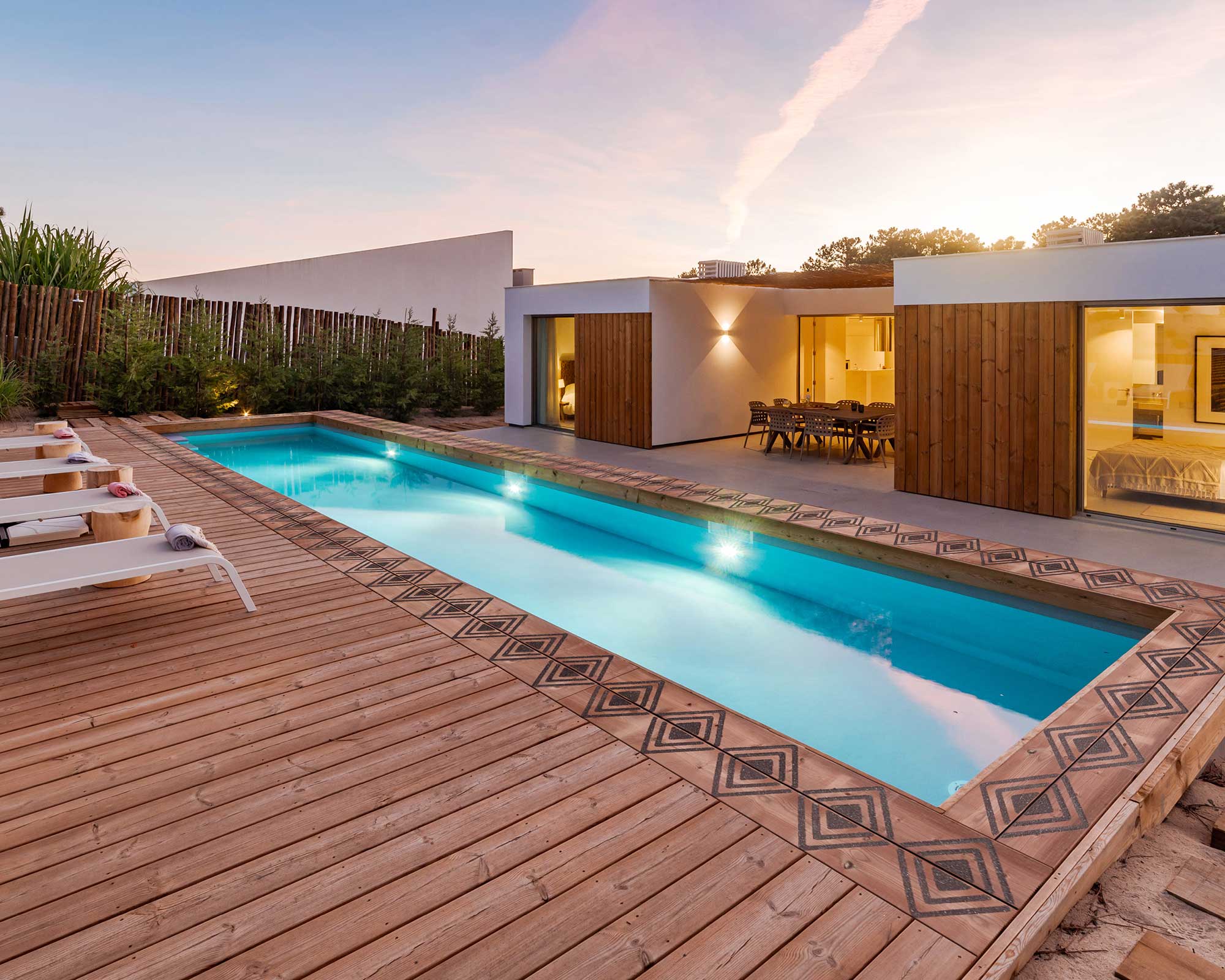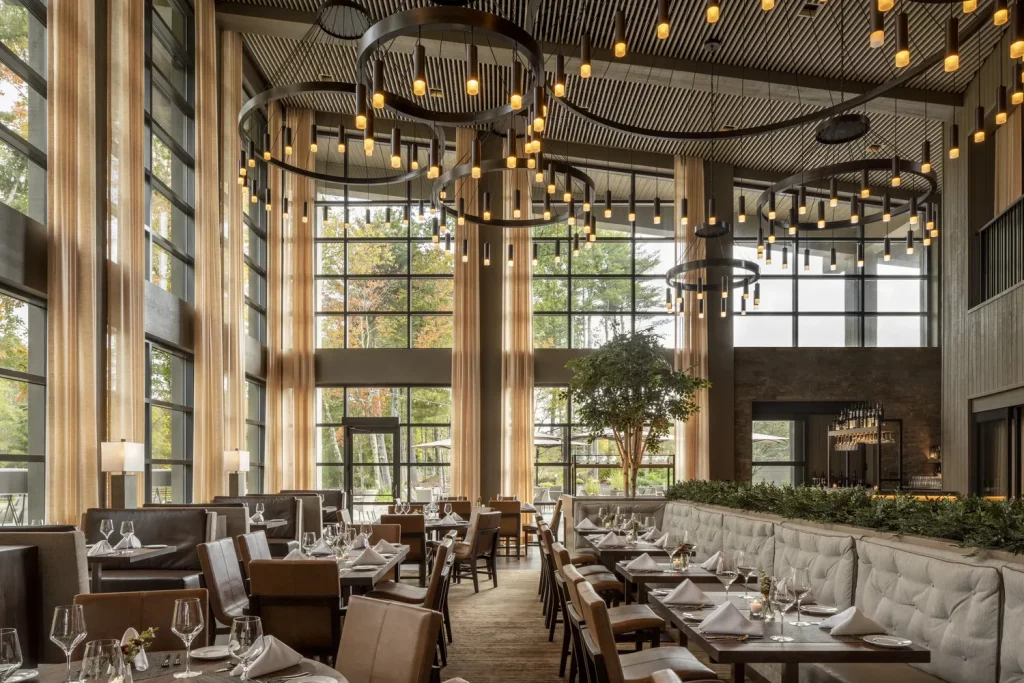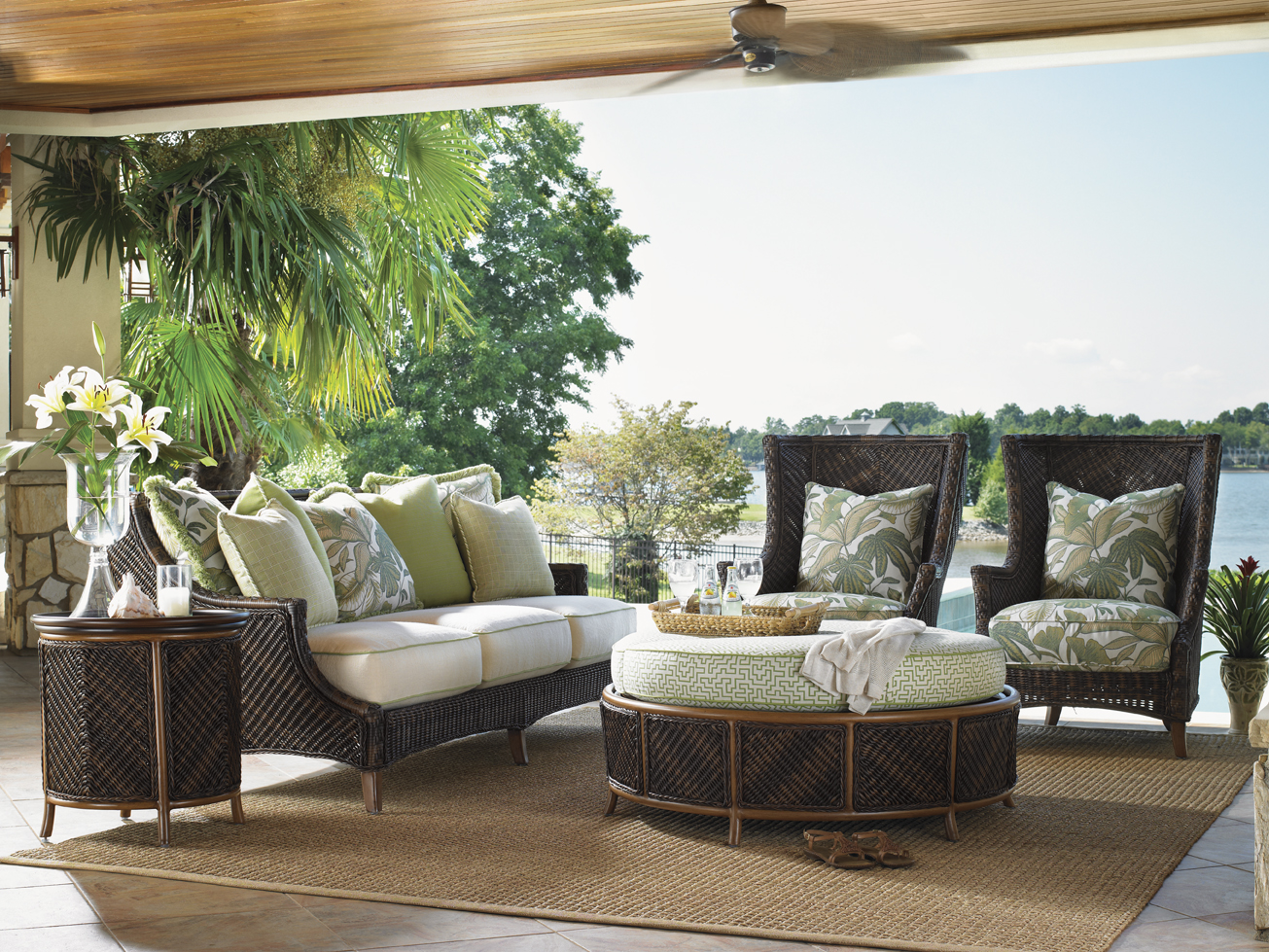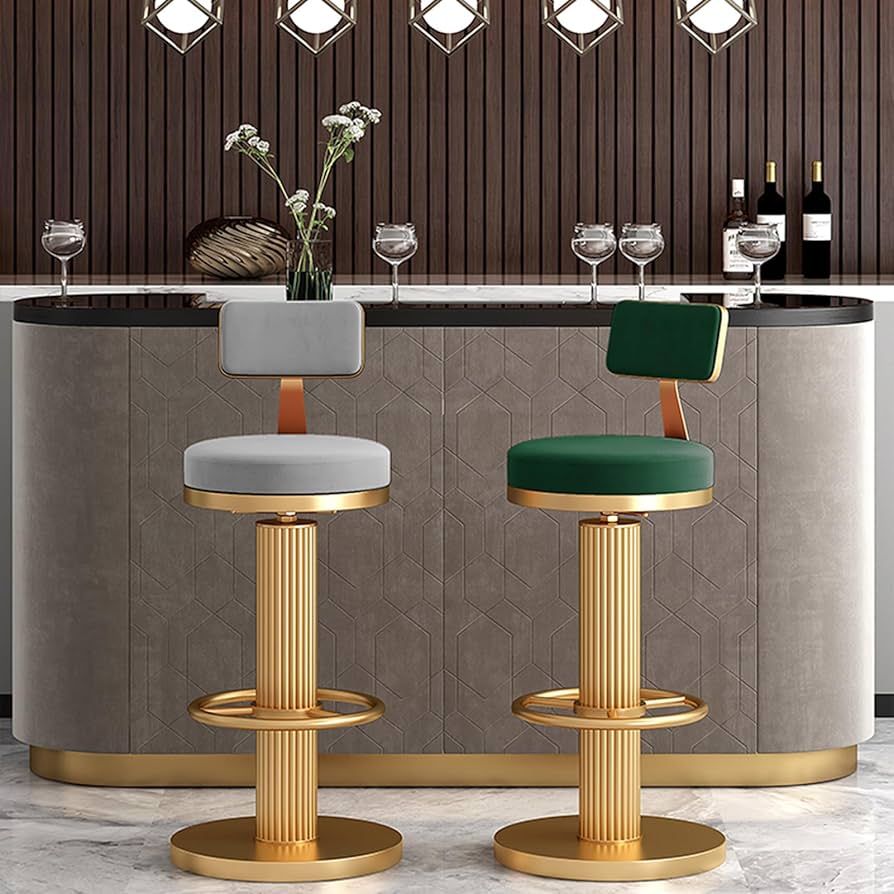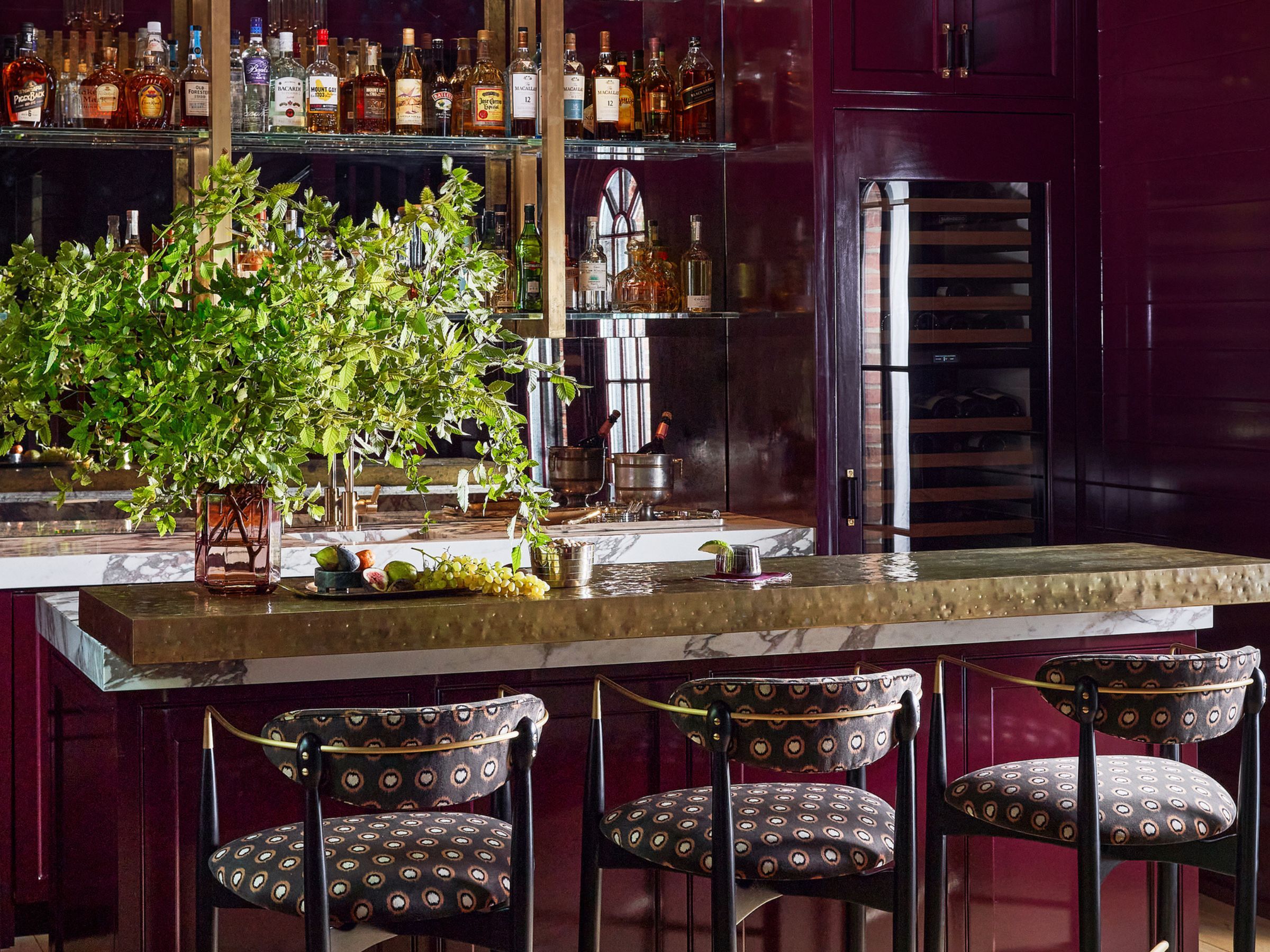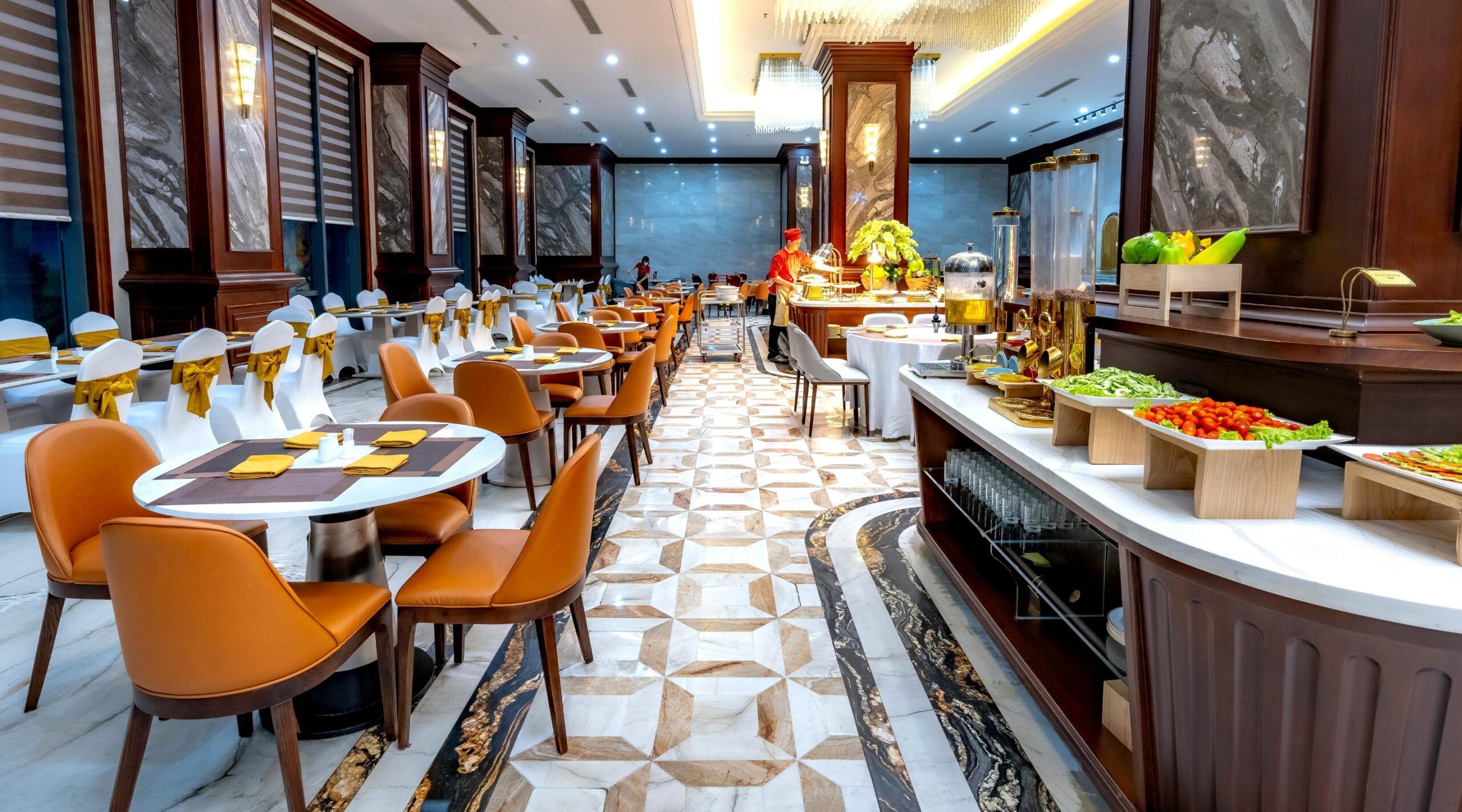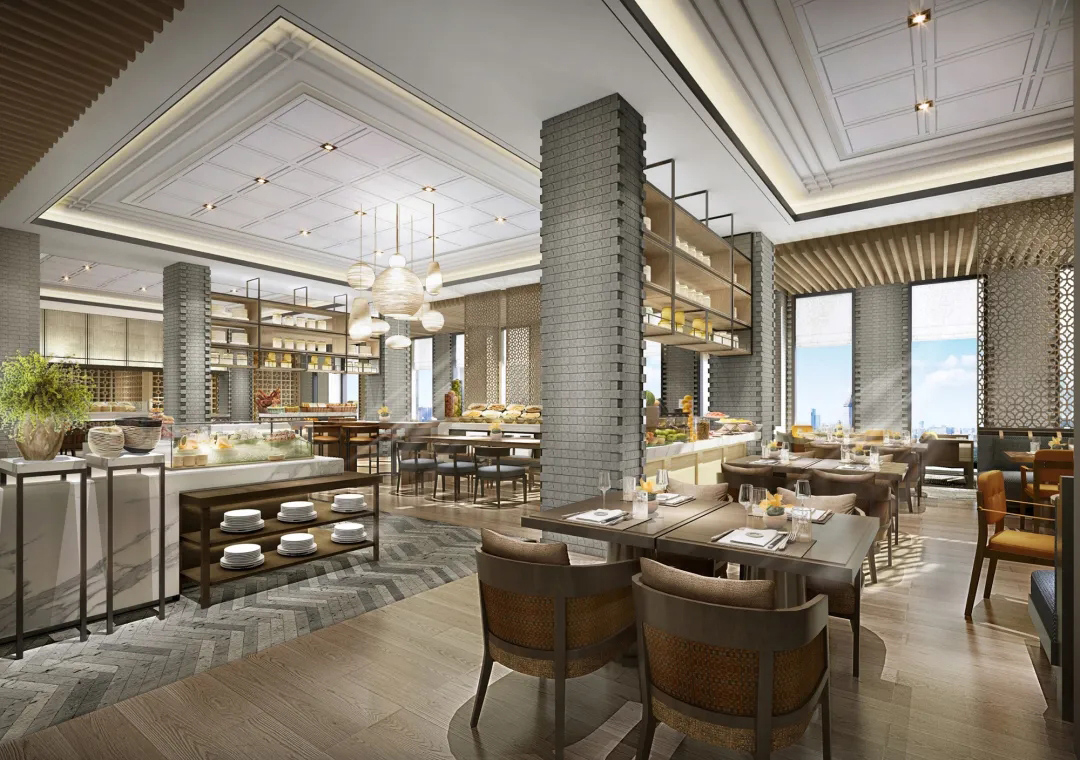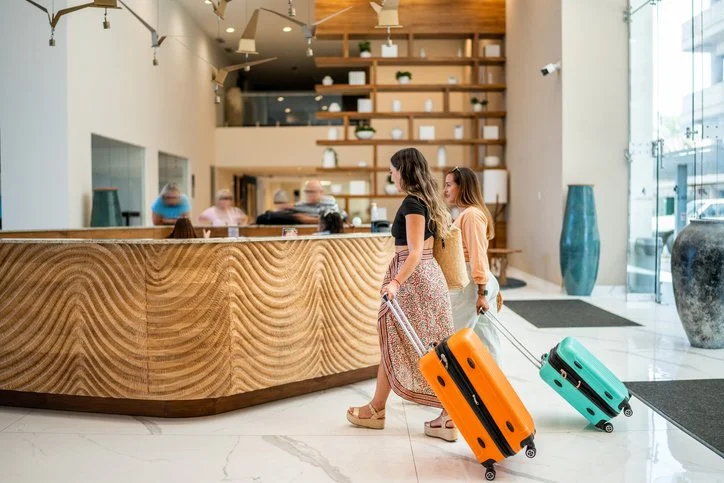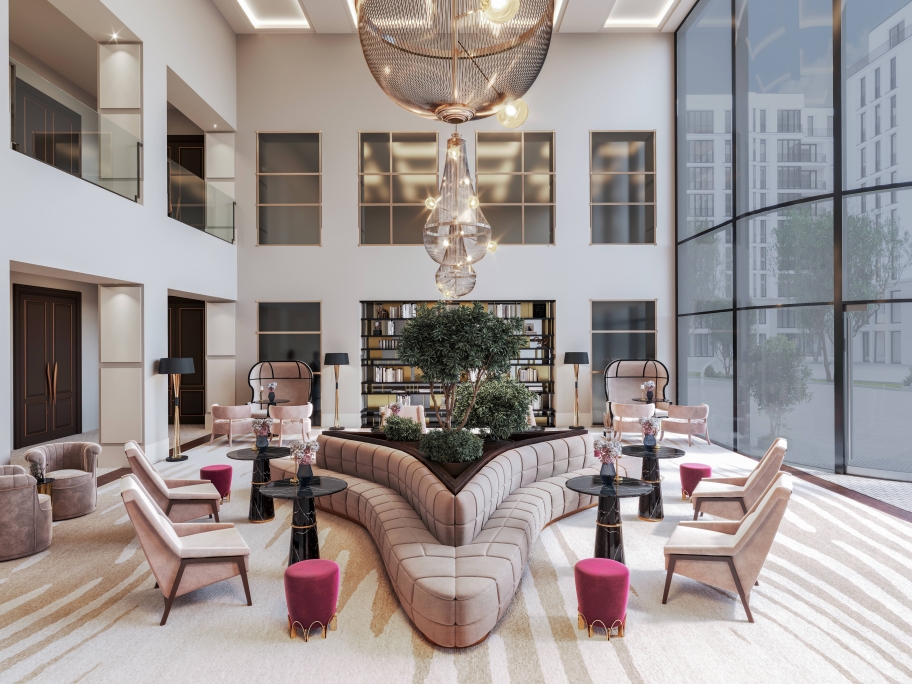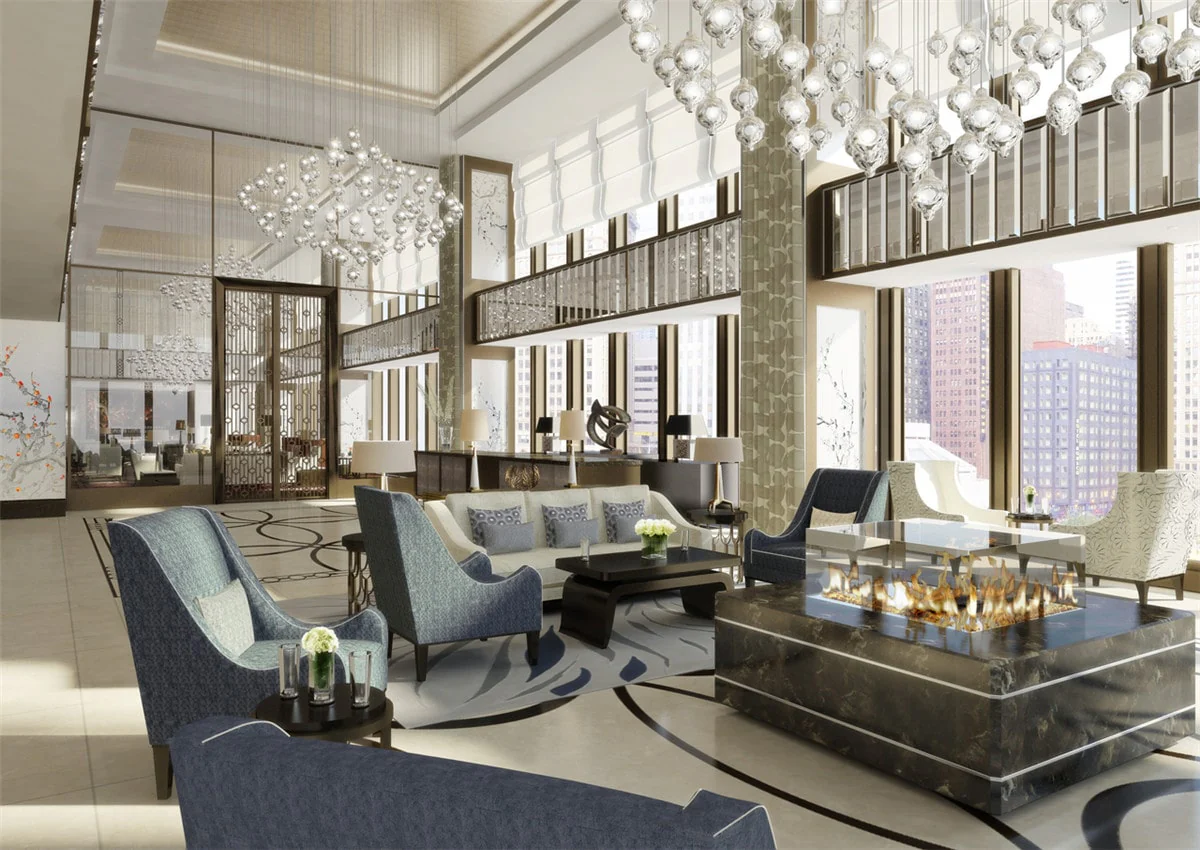Hotel Interior Design Trends 2025: Sophisticated, Modern, Sustainable
Thứ 3, 09/09/2025
Administrator
63
As the hospitality industry evolves, hotel interior design in 2025 goes beyond visual appeal to embrace sustainability, smart technology, and personalized guest experiences. The demand for refined aesthetics, functional layouts, and eco-conscious choices reflects global trends and rising customer expectations. This article highlights the key directions defining hotel interiors in 2025 and how they create lasting value for hoteliers.
1. Sophisticated Minimalism with Emotional Impact
The minimalist design philosophy continues to dominate but has evolved into a more sophisticated form in 2025. Hotels no longer focus on removing details but instead curate a limited selection of high-quality furniture and materials that bring depth and character to the space.
1.1 Neutral tones with layered textures
Color palettes center on whites, beiges, soft grays, and muted greens. However, the richness comes from layering textures such as stone, linen, leather, and fine wood finishes. This creates a calming environment while still delivering an upscale aesthetic.
1.2 Statement pieces with cultural resonance
Instead of excessive decoration, hotels highlight one or two key furniture or artwork pieces that resonate with local culture. A handcrafted wooden console or a textile wall piece made by local artisans adds personality and authenticity to the minimalist setting.
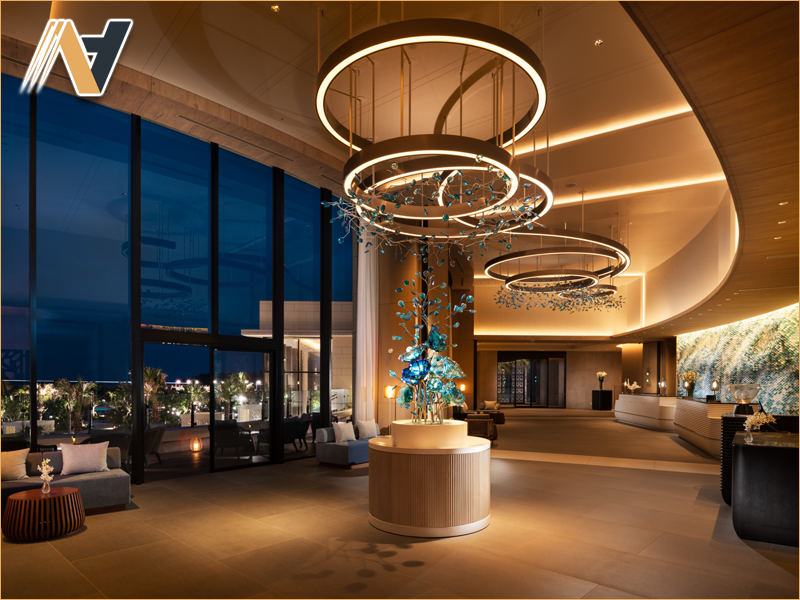
2. Technology-Integrated Guest Experiences
Modern hotels in 2025 rely heavily on technology to enhance comfort and personalization. Interior design must incorporate these elements seamlessly so that technology feels like a natural extension of the space rather than an add-on.
2.1 Smart control systems
Rooms feature integrated systems where guests can adjust lighting, temperature, and curtains through touch panels or mobile apps. The design ensures control panels blend harmoniously with wooden furniture, avoiding a clash between digital and natural aesthetics.
2.2 Virtual concierge and digital art displays
Large digital screens no longer serve only entertainment purposes. Hotels use them as virtual concierges that recommend dining, spa treatments, or events. Some properties replace traditional paintings with digital art panels that change throughout the day, adding dynamism to the space.
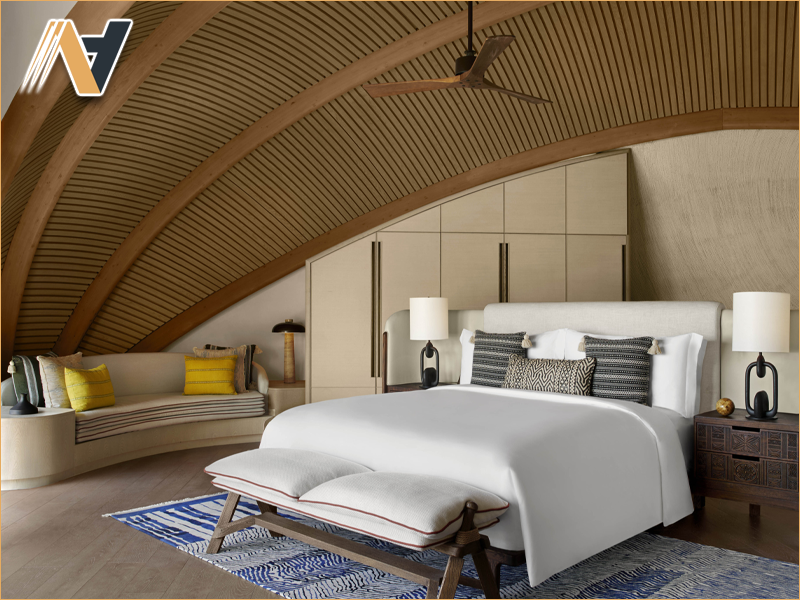
3. Sustainable and Eco-Friendly Materials
Sustainability is no longer a choice but a standard in hospitality design. Guests are increasingly drawn to hotels that show environmental responsibility through both operations and interiors.
3.1 Certified sustainable wood and recycled materials
Wood remains the dominant material in hotel furniture, but in 2025 it must come from certified sustainable sources. Recycled metal, reclaimed timber, and eco-friendly fabrics are now common in lobbies, guestrooms, and restaurants.
3.2 Energy-efficient lighting and insulation
LED lighting combined with motion sensors minimizes energy waste. Insulation panels made from natural fibers such as hemp or wool not only save energy but also add acoustic comfort, which enhances the overall guest experience.
3.3 Water-saving and eco-certified bathroom fixtures
Bathrooms adopt faucets, showers, and toilets that reduce water consumption while meeting luxury standards. Eco-certification is often displayed as part of the hotel’s branding, aligning with guests’ growing demand for transparency in sustainability practices.
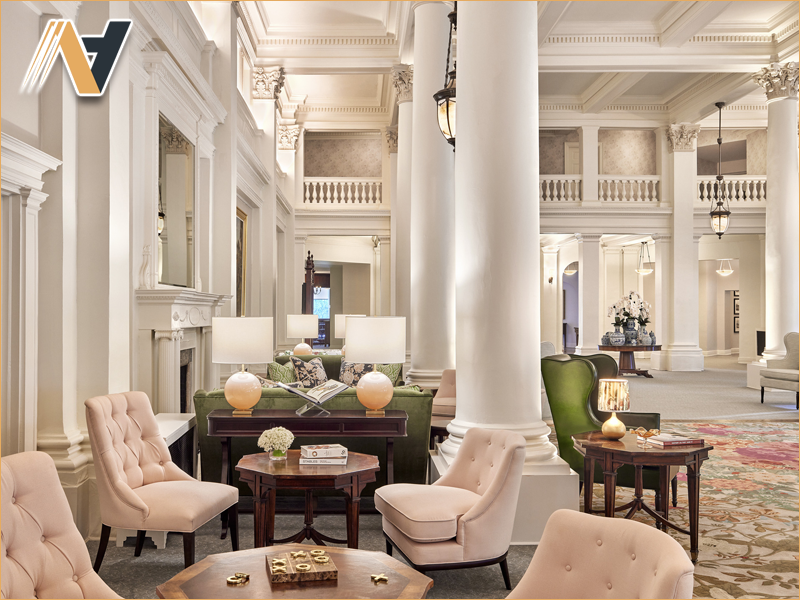
4. Flexible Spaces for Multi-Use Functions
Hotels increasingly design spaces that adapt to different guest needs, maximizing efficiency while maintaining comfort.
4.1 Convertible guest rooms
Rooms can quickly transform from workspaces during the day into relaxing retreats at night. Foldable desks, modular seating, and hidden storage are essential design features.
4.2 Hybrid lobbies and lounges
Lobbies are no longer just for check-in. In 2025 they double as co-working areas, social hubs, and event venues. Wooden communal tables, movable partitions, and acoustic panels support this multifunctional approach without sacrificing elegance.
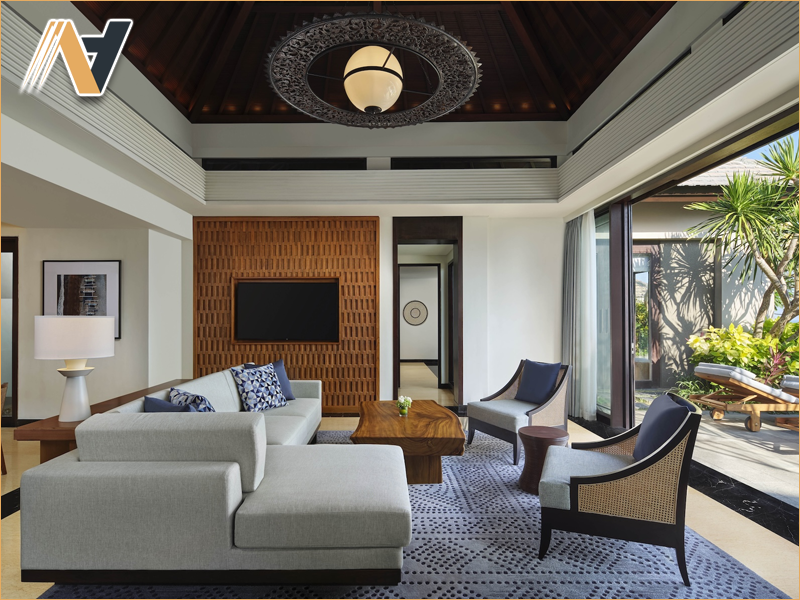
5. Wellness-Oriented and Biophilic Design
The emphasis on guest well-being has become one of the strongest drivers of design trends in hospitality. By integrating nature and wellness features, hotels create environments that reduce stress and improve satisfaction.
5.1 Indoor greenery and natural ventilation
Living walls, potted plants, and natural air circulation are widely used to connect guests with nature. This not only improves aesthetics but also supports healthier indoor air quality.
5.2 Wellness-focused amenities
Guestrooms and suites often include yoga mats, massage chairs, or aromatherapy diffusers. Public areas may feature relaxation zones with calming lighting and nature-inspired interiors, ensuring guests feel rejuvenated during their stay.
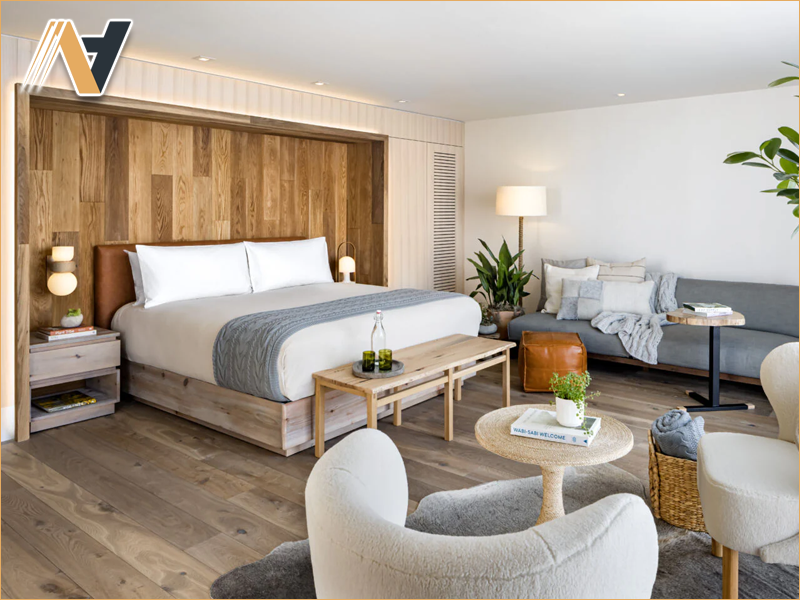
6. Conclusion
Hotel interior design in 2025 highlights the perfect blend of sophistication, modern technology, sustainability, and wellness. By adopting these trends, hotels can differentiate themselves, enhance guest satisfaction, and strengthen brand value in a competitive market. With extensive expertise in Vietnam hotel furniture OEM, Ngoc Hoang Anh specializes in manufacturing high-quality hospitality furniture tailored for international clients. Contact us today for professional consultation and production support to bring your design vision into reality.
-----
NGOC HOANG ANH TRADING COMPANY LIMITED
Tax Code: 3702874413
Address: No. 288/28/10 Huynh Van Luy Street, Zone 7, Phu Loi Ward, Ho Chi Minh City, Vietnam
Warehouse: No. 1/91, Thuan Giao 02 Street, Binh Thuan 2 Residential Quarter, Thuan Giao Ward, Ho Chi Minh City, Vietnam
Phone/Whatsapp/Wechat: +84342076666
Email: info@ngochoanganh.com.vn

